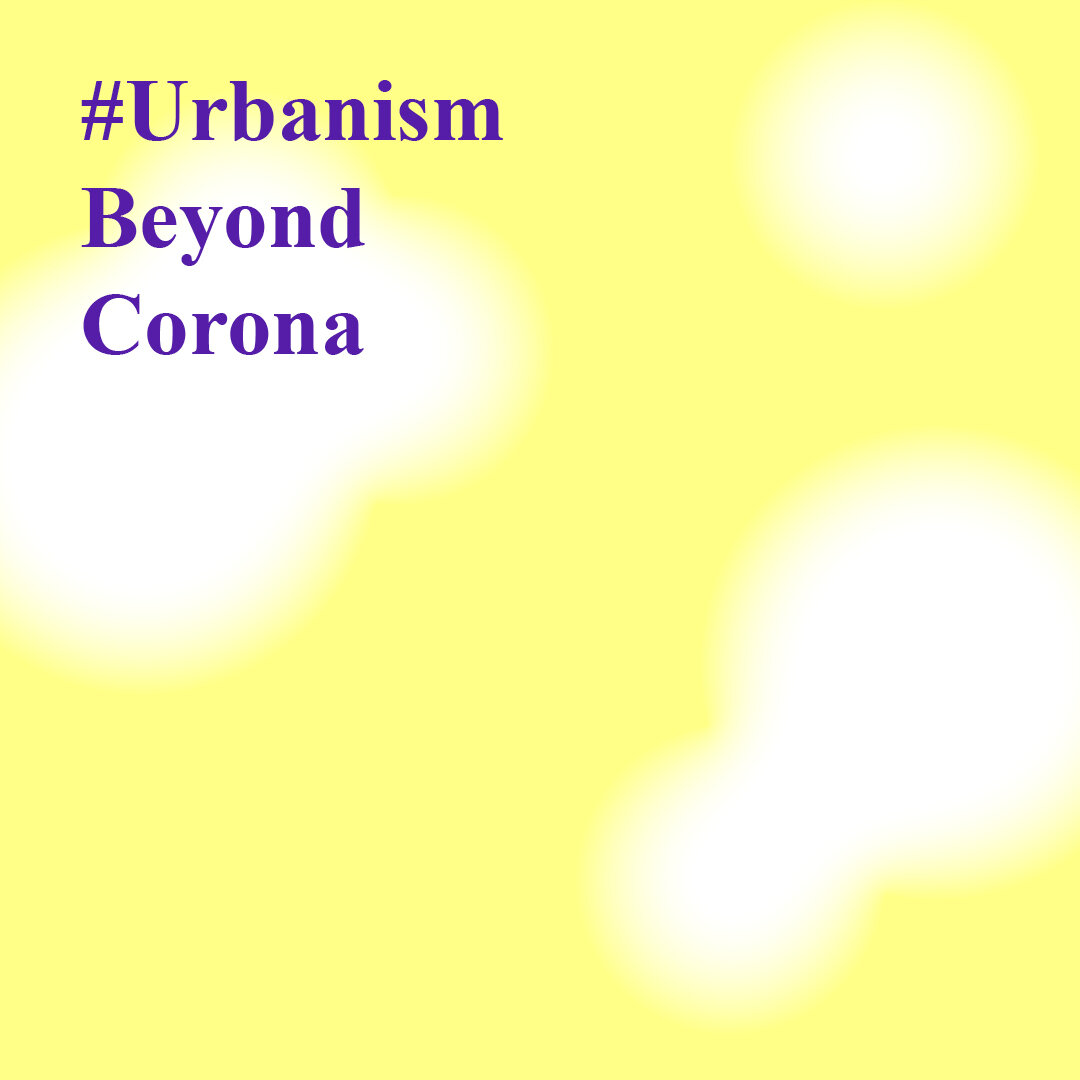#UrbanismBeyondCorona
An Instagram Series
Editors: Urban Works Agency and the Experimental History Project
June-July 2020
#UrbanismBeyondCorona
Contributors: Ross Exo Adams, Zarinah Agnew, Javier Arbona, Maria Arquero, Alexander Arroyo, Petros Babasikas, Ethel Baraona Pohl, Basurama, Kadambari Baxi, Neeraj Bhatia, Hiba Bou Akar, Lori Brown, Sigrid Busch, Fionn Bryne, Nerea Calvillo, Galo Canizares, Jordan Carver, Aaron Cayer, Aziza Chaouni, Irene Cheng, Margaret Crawford, Kenny Cupers, Peggy Deamer, Nicholas De Monchaux, Jill Desimini, Gabriel Duarte, Keller Easterling, Mona El Khafif, Alexander Eisenschmidt, Chris Falliers, Ali Fard, Mustafa Faruki, Beth Berguson, Jesko Fezer, Mari Fujita, Fabrizio Gallanti, Curt Gambetta, Reto Geiser, Kian Goh, James Graham, Yulia Grinkrug, Goke Gunel, Dan Handel, Christoph Heinemann, Rich Hindle, Sarah Hirschman, Phu Hoang, Sophie Hochhausl, Derek Hoeferlin, Joyce Hwang, Nahyun Hwang, Hugh Hynes, Jeffrey Johnson, Robert Kett, Janette Kim, Jungin Kim, Ersela Kripa, Keith Krumwiede, Karen Kubey, Jesse LeCavalier, James Leng, Jennifer W. Leung, Nancy Levinson, Juan Lopez-Aranguren, Ann Lui, Clare Lyster, Adam Marcus, Gabriel Kozlowski Maia, Padma Maitland, Freo Majer, Geoff Manaugh, Nacor Martina, Agustina Martire, Jonathan Massey, Brian McGrath, Anna-Maria Meister, Marianna Mogilevich, Rosalea Monacella, David Moon, Jacob Moore, Stephen Mueller, Claire Napawan, Albert Narath, Aisling O’Carroll, Michael Osman, Marina Otero, Marcus Owen, Mauro Parravicini, Nicholas Pevzner, Michael Piper, Cesar Reyes Najera, Quilian Riano, Chris Roach, Erik Rodenbeck, Eric Rogers, Elihu Rubin, Ozayr Salojee, Susanne Schindler, Giula Scotto, Andrew Shanken, Lola Shephard, Roger Sherman, Anooradha Siddiqi, Brett Snyder, Antje Steinmuler, Sara Stevens, Geoff Thun, Renee Tribble, Neyran Turan, Nicola Twilley, Luciana Varkulja, Kathy Velikov, Claire Weisz, Nora Wendl, Mason White, June Williamson, Alex Yuen, and Mimi Zeiger.
Imagining urban life after the Covid-19 pandemic alternately conjures bleak forecasts or hopeful speculations. Despite ongoing conversations about a “new normal,” it seems there never has been nor ever will be anything normal. The pandemic shines light on a crisis that has been years in the making through systemic distributions of power and wealth. How can we look ahead with a more calibrated optimism? Doing so might require that we open up urban narratives to deeper structural analysis and infrastructural practices to more radical reimagination. Doing so might explore how interim steps of coping and recovery can prompt far more ambitious future states and avoid reverting to a pre-Corona status quo.
Covid-19 is distinctly spatial in its redistribution of bodies, collective forums, and territorial systems. Neoliberal playbooks have triggered government bankruptcy even as they are blocked by rent strikes and shuttered storefronts. Cities have designated maintenance and care as essential, mobilizing workers’ negotiating power while perpetuating their exposure. Shelter-in-place orders have recuperated a therapeutic role for the home while unmasking its other meanings as a site of abuse, labor, and social infrastructure. The pandemic distances and recombines. It has exaggerated inequities among segregated communities and further entrenched populist culture wars and anti-immigrant backlash. It has even brought the open floor plan into question. But the pandemic has also transformed public parks into hospital waiting rooms, schools of architecture into factories, and boutique organic farms into food banks. Conditions of density and urban form crystallized by euclidean codes for a hygienic city are today recharged by questions of governance and power essential to shaping a more equitable city. Political boundaries seem as arbitrary and capricious as ever; never has the feeling that we are one planet been more tangible, and urgent.
#UrbanismBeyondCorona is a series of Instagram posts published over four Wednesdays in June and July, 2020 and created by architects, urbanists and scholars of the built environment. Each contributor was asked to offer a prediction, warning, gift, hack, instrument, prompt, or question that reflects on the role designers and urban actors can play in shaping cities after Covid-19. As directors of the Urban Works Agency and the Experimental History Project at the California College of the Arts Architecture Division, we created this series in hopes of sparking an open, informal conversation amidst this ever-changing situation. We welcomed provisional ideas on particular topics, and hope readers and authors alike will feel free to respond, retune and adjust as the series developed.
To see the full prompt, click here.


